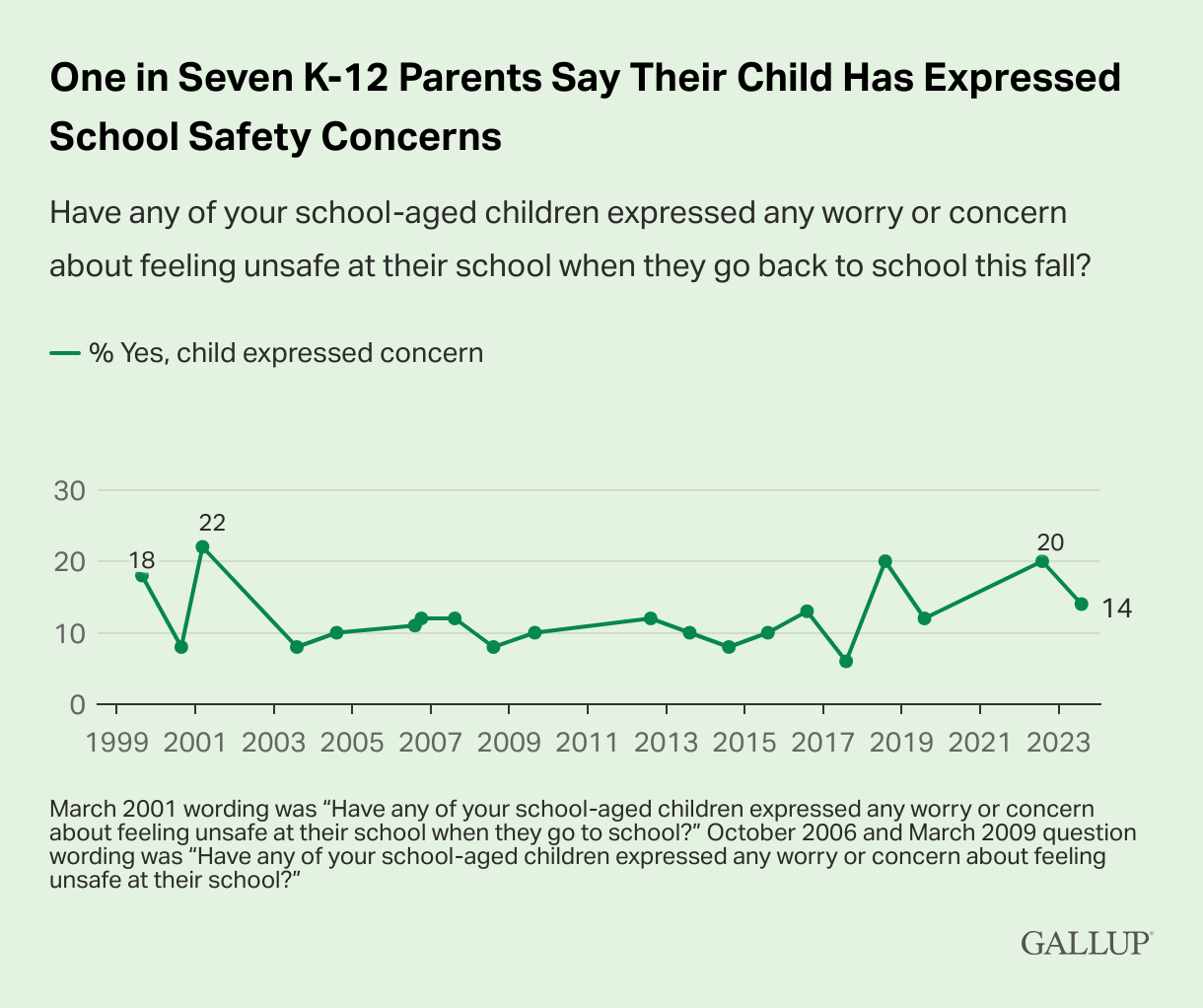In the growing suburbs across the USA, the safety of our public schools is a paramount concern. With the unique challenges these suburban environments present, securing funding for safety initiatives is crucial. With student populations in some districts reaching over a million – for instance, New York City's public school system serves over 1 million students – the scale of safety needs is immense.
Given these significant statistics, and in light of a report from the National Center for Education Statistics showing that 82% of public schools have reported one or more incidents of violence, theft, or other crimes, totaling 1.4 million incidents in a single academic year, it's clear that securing sufficient funding for school safety is an important priority. This data underscores the need for schools to actively seek out and effectively utilize safety grants to address and mitigate these concerns in a timely manner.
Facing the challenge of limited budgets, school administrators frequently find themselves in troubled waters, having to balance the immediate needs of classroom supplies, transportation, and staff salaries against the critical necessity of upgrading school security and safety. This financial tightrope makes school safety grants increasingly essential offering a much-needed lifeline to schools striving to enhance their security infrastructure while managing day-to-day operational costs.
This blog post aims to assist administrators, superintendents, and directors across K-12 schools, universities, and colleges in navigating the process of identifying, securing, and effectively utilizing school safety grants.
Exploring School Safety Grants Your School Qualifies For
- Federal Grants and ESSER Funds: The U.S. Department of Education's ESSER fund (Elementary and Secondary School Emergency Relief Fund), part of the CARES Act, has emerged as a crucial source of support for schools. These funds, flexible in their use, can be directed towards a variety of safety measures. Additionally, the Federal Support for School Safety and Security Report highlights several other key programs:
- Student Support and Academic Enrichment (SSAE) Grants: These grants are distributed to local educational institutions to enhance academic achievement of students and can be flexibly used for school safety policy and security programs.
- Matching Grant Program for School Security: Offered by the US Bureau for Justice Assistance (BJA), these grants support training to prevent violence and can be used for various school safety measures, including emergency notification system for K-12 schools.
- School Safety National Activities: This program, which includes Grants to States for Emergency Management (GSEM), focuses on developing comprehensive school emergency operations plans covering prevention, protection, mitigation, response, and recovery.
- Project School Emergency Response to Violence (Project SERV): Aimed at educational agencies and institutions facing violent or traumatic crises, these school grants offer flexibility in application, including for mental health services and security measures.
- State-Specific Grants: Many states have their own grant programs tailored to the unique needs of their schools. Here are some examples:
- California Safe Schools for All Plan: California, for instance, has the Safe Schools for All Plan, which aims to provide resources for COVID-19 testing, personal protective equipment, and other safety measures to ensure safe in-person instruction.
- Texas School Safety Center Grants: The Texas School Safety Center offers various grants focused on improving school safety through measures like emergency operations planning, mental health initiatives, and violence prevention programs.
- Florida’s School Hardening Grants: Florida offers School Hardening Grants to help schools improve campus security, including funds for infrastructure upgrades and emergency preparedness training.
- New York’s Smart Schools Bond Act: This Act in New York provides funding for school technology and infrastructure improvements, which can include security systems and emergency communication enhancements.
- Illinois Emergency Management Agency Grants: These grants, offered by the Illinois Emergency Management Agency, can be used for school safety measures such as disaster preparedness and crisis intervention training.
- Pennsylvania Safe Schools Initiative: This initiative provides funding to schools in Pennsylvania for programs aimed at preventing and reducing incidents of violence in schools.
- Michigan State Police School Safety Grants: These grants focus on improving the safety and security of students, staff, and school buildings through the acquisition of technology and equipment.
- Ohio’s School Safety Center Grant Program: Ohio offers grants to assist schools in implementing safety plans and conducting safety drills, along with training for staff and students.
- Virginia School Security Equipment Grants: These grants help Virginia schools purchase security equipment like video monitoring systems, metal detectors, and communication systems.
- Georgia’s Safe Learning Environment Grants: Aimed at creating safe learning environments, these grants can be used for security upgrades and mental health support services.
- Colorado Safe2Tell Program: This program in Colorado offers grants for anonymous reporting systems designed to increase student safety and reduce threats in schools.
- New Jersey School Security Grant Program: This program helps New Jersey schools fund security and surveillance upgrades, including access control systems and emergency response and communication systems.
- Washington School Safety and Student Well-being Grants: These grants support Washington schools in efforts to improve student mental health and safety, including crisis response training and bullying prevention programs.
- Massachusetts Safe and Supportive Schools Grants: Massachusetts offers grants focused on creating safe and supportive learning environments, which can include mental health services and violence prevention strategies.
- Arizona School Safety Program Grants: These grants in Arizona support school resource officers, juvenile probation officers, and other programs aimed at enhancing school safety.
- Additional Federal Programs:
- Student Safety and Campus Emergency Management Grants: These grants from the US Department of Education support higher education institutions in improving safety and emergency alert system for K-12 schools.
- Education for the Disadvantaged: Grants to LEAs (Local Education Agencies) (Title I-A): While not explicitly for safety, these funds can be used for initiatives that improve school safety as part of enhancing overall student performance. Schools should employ strategies and methods to strengthen their academic programs including mental health solutions and a robust health and safety management platform for K-12 schools.
- Emergency Management Performance Grant Program (EMPG): This program provides federal funds for preparing for all hazards, including safety measures in schools.
- The Edward Byrne Memorial Justice Assistance Grant (JAG) Program: JAG funds can be used for a broad range of criminal justice initiatives, including school safety measures.
Determining Eligibility and Applying for School Safety Grants
- Needs Assessment: Begin with a comprehensive evaluation of your school's safety requirements. This should include not only immediate security needs but also long-term safety planning. Consider school safety systems and technologies that will provide sustainable safety solutions.
- Understanding Grant Requirements: Each grant has unique criteria. For instance, some grants may focus on specific areas like mental health and wellness or emergency management plans. It's crucial to align your school's needs with the grant's focus.
- Data-Driven Grant Applications: Strengthen your school safety grant application with relevant statistics and data. This includes not only statistics on incidents but also data on how proposed improvements can positively impact the school environment and student wellness and academics.
- Grant Compliance: Be aware of the conditions attached to each grant. Some grants, for example, may require a certain percentage of funds to be matched by the school or may have specific conditions on the types of school safety solutions/technologies or services that can be funded.
- Grant Proposal Writing: When writing your grant proposal, it's important to clearly articulate how the funds will be used and how they align with both your school's needs and the grant's objectives. Be specific about the technologies and school safety solutions or programs you plan to implement, such as advanced K-12 incident management software, emergency management system for K-12 schools, telehealth, access control, or mental health solutions.
- Utilization of Funds: Consider innovative ways to use grant funds that align with both educational and safety goals. This could include investing in STEM programs, environmental sensors, or modern communication devices to enhance both learning and safety.
The Current State of School Safety
Public school safety is a complex issue, encompassing challenges from socio-economic disparities to heightened security concerns. In these situations, where protecting students involves handling everyday issues and being ready for unexpected emergencies, funding for school safety is very important. According to Gallup, one in seven K-12 parents report that their child has raised concerns about school safety.

Source: Gallup
In addition, the National Center for Education Statistics reports that while over 90% of public schools have implemented safety measures including but not limited to evacuation, lockdown, shelter, etc., the financial burden of these implementations is often a significant hurdle, especially for schools in under-resourced areas.
Schools not only struggle with typical safety issues like bullying and campus security but also face heightened concerns such as gang activity, cyber threats, and emergency preparedness for suburban-specific crises. For instance, suburban district schools are more likely to experience a wider range of safety issues, necessitating more comprehensive and adaptable safety solutions.
Funding for these comprehensive safety measures is a critical concern. While school safety grants provide a pathway, the competition and complexity of securing these funds underscore the need for schools to be strategic and well-informed in their approach. This is where understanding the nuances of school safety, from the ground realities to the potential of innovative solutions, becomes vital in crafting effective grant applications and safety strategies.
Takeaway
Securing a school safety grant is a competitive yet achievable goal. With careful planning, precise needs assessment, and a compelling proposal, your school can access the funds needed to ensure a safer learning environment for every student.
As we navigate the complexities of ensuring safety in our schools, particularly in the fast-paced and diverse environments, the role of strategic school safety funding becomes undeniably crucial. The journey to secure and effectively use school safety grants is not just about enhancing physical security measures; it's about creating a holistic, nurturing environment where every student can thrive without fear.
By understanding the specific needs of your school, aligning with the criteria of various school safety grants, and crafting compelling, data-driven applications, your institution can unlock the potential to not only meet but exceed safety expectations.
Kokomo24/7® understands the importance of school safety and the challenges schools face in securing the necessary funding. We are committed to supporting educational institutions in this crucial endeavor.
Kokomo24/7® is a leader in compliance and risk management solutions for all things health and safety. Kokomo shares your passion for school safety and has a significant track record across Fortune 1000 companies as well as public-sector clients and schools like Chicago Public Schools. Ask us about the time we helped host the Oscars!
Reach out to Kokomo24/7® for expert guidance on securing school safety grants and strengthening your school's security infrastructure.

 CASES™
CASES™ ESCALATE™
ESCALATE™ TRIAGE™
TRIAGE™ NOTIFY™
NOTIFY™ FORMS™
FORMS™ ANALYTICS™
ANALYTICS™ HOST™
HOST™ OWLPASS®
OWLPASS® ACCESS™
ACCESS™ WELLNESS™
WELLNESS™ CONNECT™
CONNECT™ CREDENTIALS™
CREDENTIALS™



